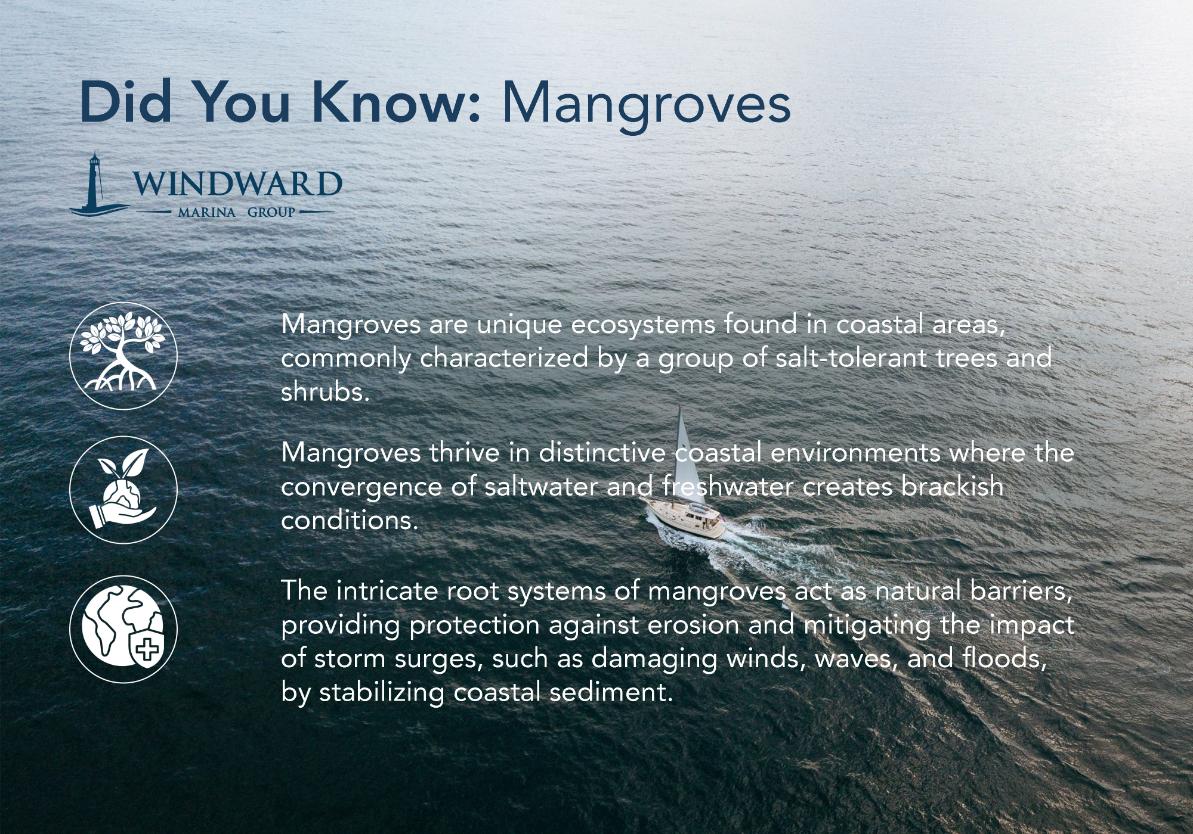
Did You Know: Mangroves
What are Mangroves?
Mangroves are unique ecosystems found in coastal areas, commonly characterized by a group of salt-tolerant trees and shrubs. These resilient ecosystems are crucial for coastal biodiversity and serve as a protective buffer against storm surges and erosion. Mangroves are adept at trapping sediments, filtering pollutants, and providing essential breeding grounds for various marine species. Their intricate root systems not only anchor the soil but also provide a habitat for numerous juvenile fish and invertebrates. Additionally, mangroves play a significant role in carbon sequestration, helping mitigate climate change. Their adaptability to harsh coastal conditions makes mangroves vital for maintaining ecological balance and supporting the livelihoods of communities dependent on coastal resources.

Mangroves thrive in distinctive coastal environments where the convergence of saltwater and freshwater creates brackish conditions. Typically flourishing in tropical and subtropical regions, these ecosystems establish themselves in muddy or sandy coastal zones, subject to regular tidal influences. Mangroves exhibit remarkable resilience in the face of challenging conditions, including fluctuating salinity levels, elevated temperatures, and periodic inundation. Their adaptive prowess is notably showcased through specialized root systems, such as prop roots or pneumatophores, which anchor them securely in the soft, waterlogged soil, ensuring stability and facilitating optimal nutrient absorption. This unique ability to navigate and thrive within the specific environmental factors allows mangroves to occupy the critical ecotone. In doing so, mangroves play a crucial role in providing essential ecological services and sustaining a diverse array of plant and animal life.
How do they benefit the environment?
Mangroves offer a myriad of environmental benefits that contribute significantly to the coastal ecosystem. Their intricate root systems act as natural barriers, providing protection against erosion and mitigating the impact of storm surges, such as damaging winds, waves, and floods, by stabilizing coastal sediment. They have a pneumatophore root structure which means their roots do not entirely submerge underground, instead the roots grow out of the soil, sand, or water to allow for aeration of the root system. Due to the roots growing outwards of the soil, it acts as a barrier to prevent the sand and silt from washing away from the shore. These coastal forecasts act as natural water purifiers, filtering pollutants and trapping sediments, improving water quality in adjacent areas. The complex mangrove root system filter nitrates, phosphates, and other pollutants from the water, improving the overall quality. The root system also plays a role in controlling the salinity in the water. Furthermore, mangroves play a vital role in carbon sequestration, with their trees storing substantial amounts of carbon in both aboveground and belowground biomass. By capturing and storing atmospheric carbon dioxide, mangroves help mitigate climate change. Overall, the multifaced contributions of mangroves underscore their importance in maintaining ecological balance, supporting biodiversity, and enhancing the resilience of coastal environments.

Beyond safeguarding shorelines, mangroves serve as crucial nurseries for marina life, providing a sheltered and nutrient-rich habitat for various species during their early stages of development. They also act as a habitat for small fish, crabs, shrimp, and other shore feeders. The habitat the root systems provides creates a food source for birds and larger predators. The mangrove leaves also decompose and break down which is a thriving source for microorganisms. Mangroves play a vital role in the environment by creating an ecosystem of extremely high diversity.

Protection of the mangroves
Preserving mangroves requires a concerted effort from individuals and communities. One key approach is raising awareness about the ecological importance of mangroves and the threats they face. Engaging in community-based initiatives, such as cleanup campaigns and educational programs, helps foster a sense of responsibility and appreciation for these ecosystems. Sustainable tourism practices that minimize ecological impact and support local conservation efforts can also contribute to mangrove protection. Implementing and enforcing regulations that prohibit illegal logging, fishing practices harmful to mangroves, and coastal development in sensitive areas is crucial. Additionally, supporting and participating in mangroves restoration projects, such as replanting initiatives, helps rehabilitate degraded areas. Collaborative efforts on a larger scale, involving governments, non-governmental organizations, and local communities, are essential to address the complex challenges facing mangroves and ensure their long-term survival.
In essence, mangroves play a multifaceted and pivotal role in coastal ecosystems. Their significance extends far beyond their physical presence along coastlines; they are guardians of biodiversity, contributors to water quality, climate change mitigators, and essential components of a complex and interconnected web of life. Recognizing and appreciating the intricate functions of mangroves is paramount for fostering a holistic approach to conservation, ensuring the resilience and sustainability of coastal environments for generations to come.



